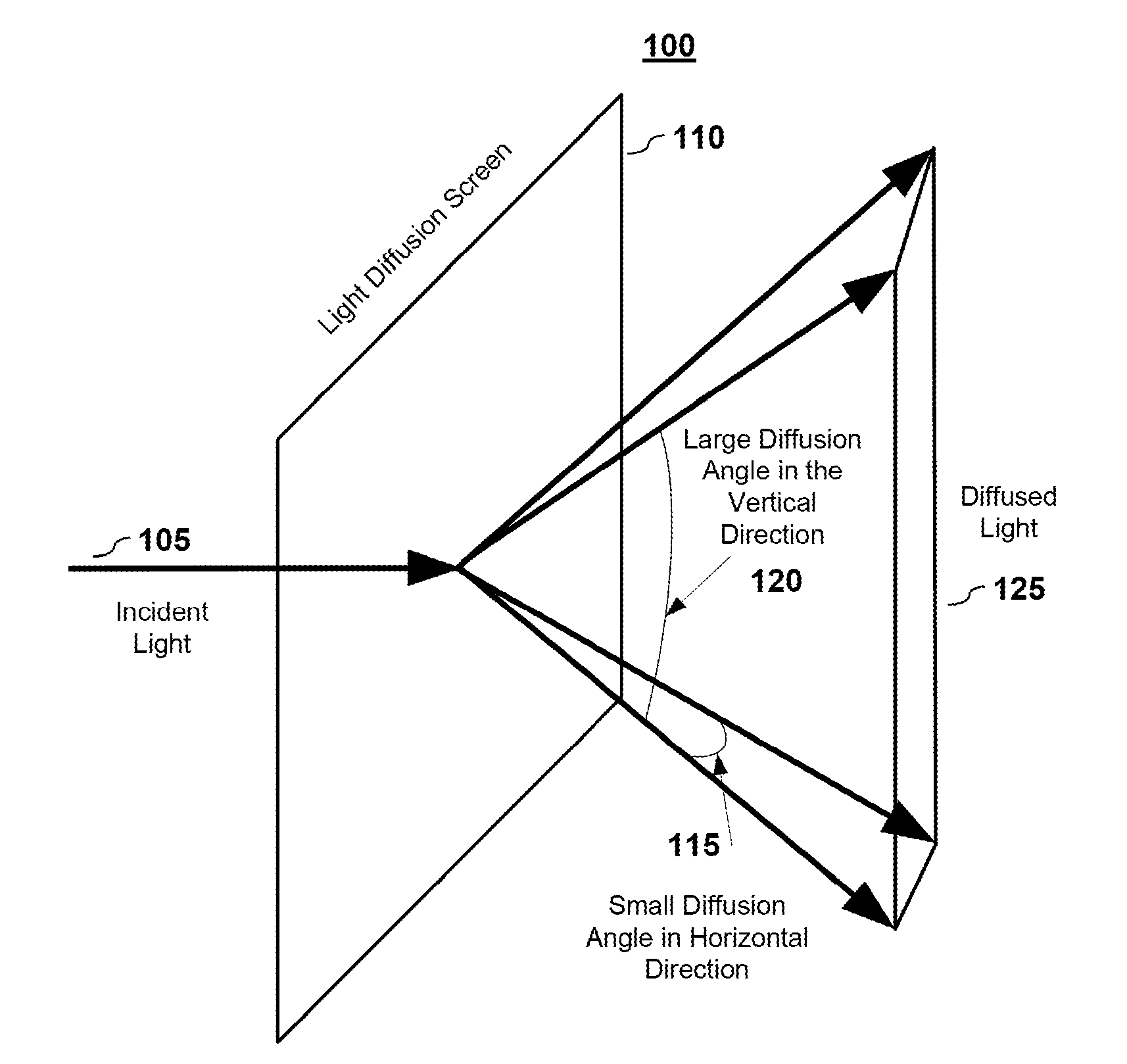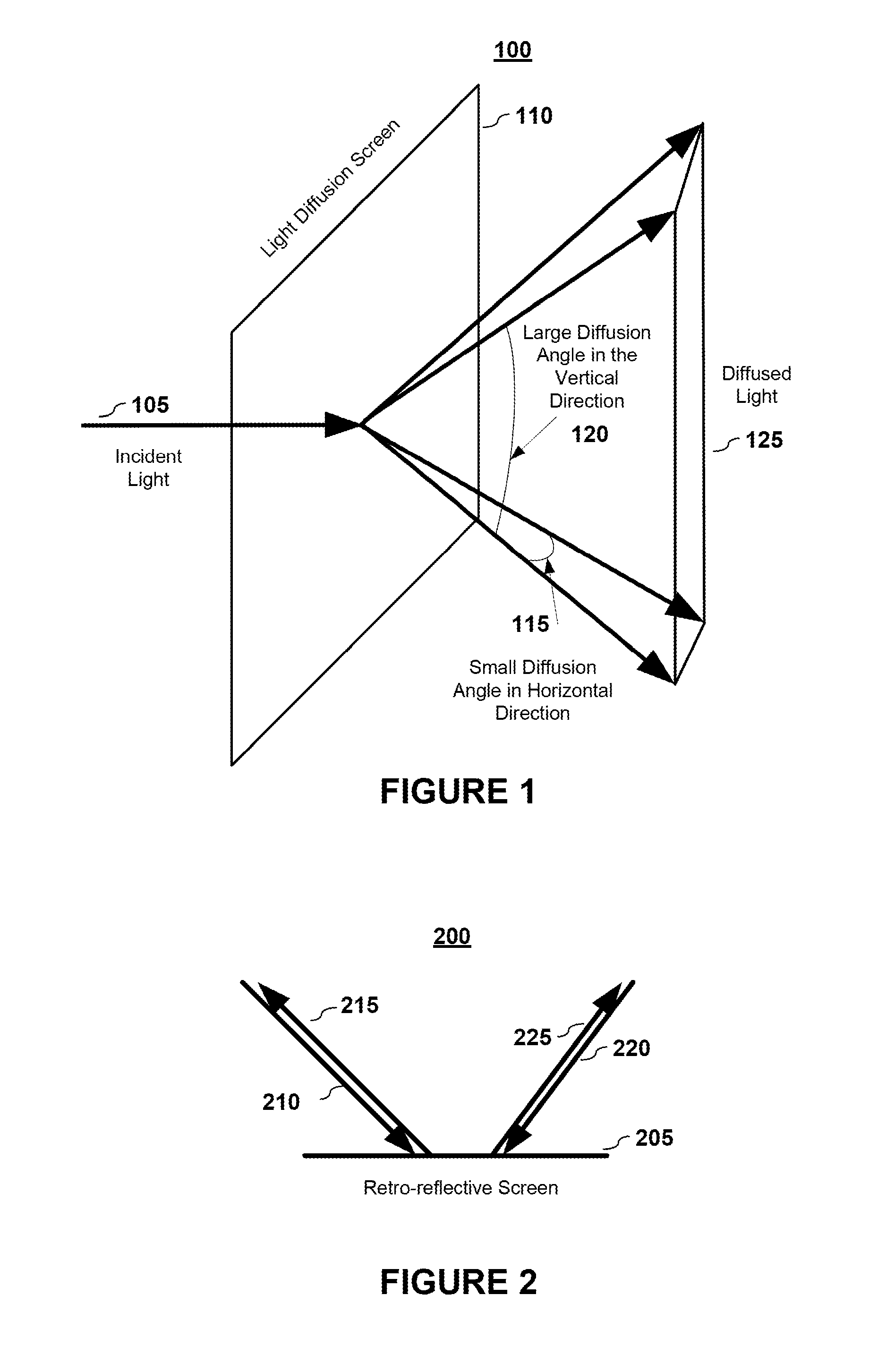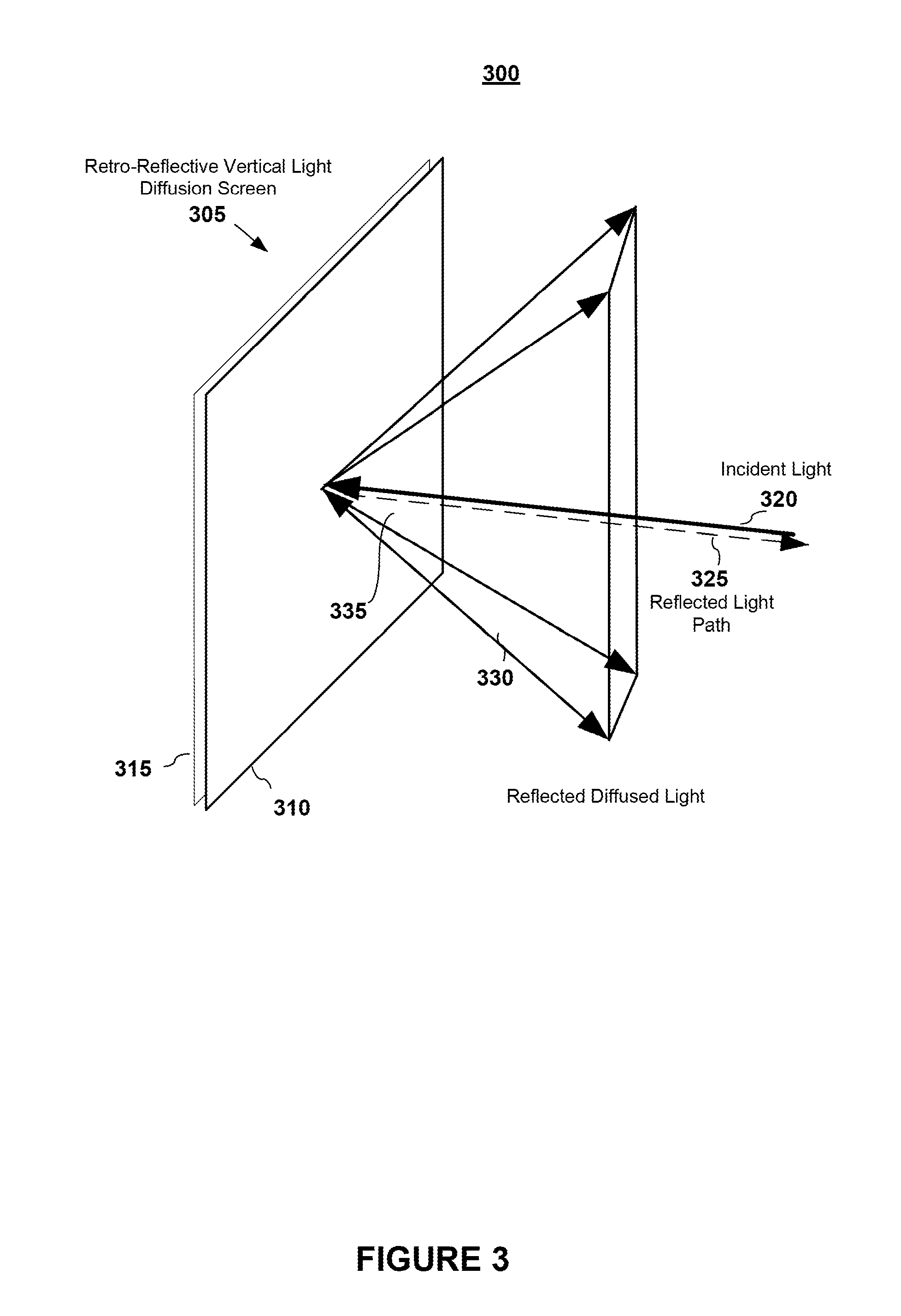Various Configurations Of The Viewing Window Based 3D Display System
a display system and display window technology, applied in the field of displays, can solve the problems of cumbersome approach, dimmer image, and inability to perceive stereo effect or correctly, and achieve the effect of increasing the viewing area
- Summary
- Abstract
- Description
- Claims
- Application Information
AI Technical Summary
Benefits of technology
Problems solved by technology
Method used
Image
Examples
Embodiment Construction
[0039]The presently preferred embodiment makes use of a retro-reflective vertical light diffusion screen. Such a screen is typically comprised of two layers: a first layer of a one-dimensional (1D) light diffusion material (which has a small diffusion angle in one direction and a large diffusion angle in another direction) and a second layer of a retro-reflective material (which reflects light rays back at their respective incident angle).
[0040]With reference to FIG. 1, the first layer 100 consists of a light diffusing material 110. An incident light ray 105 that passes through light diffusing material 110 is diffused by a small angle 115 in the horizontal direction and diffused by a large angle 120 is the vertical direction. This creates a diffused light window 125. This type of diffusion screen can be referred to as a vertical light diffusion screen.
[0041]With reference to FIG. 2, the second layer of the retro-reflective vertical light diffusion screen includes a retro-reflective ...
PUM
 Login to View More
Login to View More Abstract
Description
Claims
Application Information
 Login to View More
Login to View More - R&D
- Intellectual Property
- Life Sciences
- Materials
- Tech Scout
- Unparalleled Data Quality
- Higher Quality Content
- 60% Fewer Hallucinations
Browse by: Latest US Patents, China's latest patents, Technical Efficacy Thesaurus, Application Domain, Technology Topic, Popular Technical Reports.
© 2025 PatSnap. All rights reserved.Legal|Privacy policy|Modern Slavery Act Transparency Statement|Sitemap|About US| Contact US: help@patsnap.com



